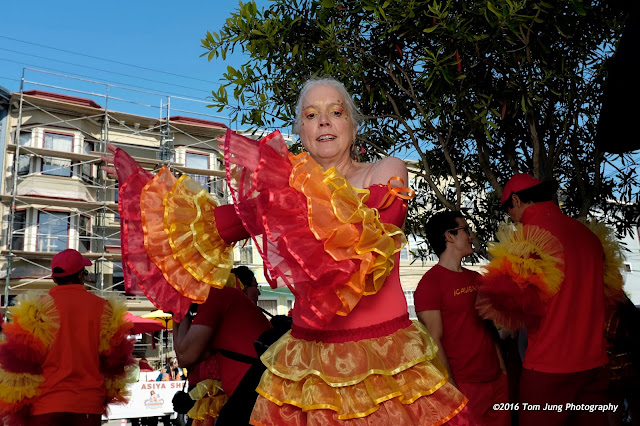Love, Love, Love. The is much to be said about the Fuji X system. Many have observed that because the system is only been around since 2012, there are no legacy lenses to impede this state-of-the-art system. In a word, the lenses, first the primes and now the zooms, are sharp, and coupled with Fuji's history of behind the scenes innovation (They invented Face Recognition Technology for their commercial printers), created a line of cameras that are real people pleasers, rendering wonderful skin tones under a variety of conditions. I have heard some criticism that their interpretation is not 100% accurate, but as a believer that color images are felt more then seen, will say that any errors made are to the good.
Much has been said about the usability of the cameras, and the nostalgic placement of the camera's controls to feel "just right" to photographers who still remember using film. I said in an earlier post that control placement on mechanical film cameras was not always based on practical ergonomics, but on design limitations imposed by the existing technology. Aperture controls were positioned on the lens because that's where the aperture actually was, connections being accomplished by a physical linkage rather that a micro circuit.
Hate, Hate, Hate. So everything isn't strawberries and ice cream. There were some major hiccups in the system, which can traced to the tendency to squeeze more features into smaller spaces. As I've complained about before, putting too many adjustment onto a single, tiny external button can lead to an inadvertent maladjustment.
 |
| Read Ken Rockwell's Review by clicking here. |
 | ||||||
| Photo Credit: DPreview.com. Click here to read the complete post. |
In real life, it's too easy for the base of the thumb to accidentally press the Flash option on the Command Dial. Now we're in the navigation mode, and a second accidental press changes the option to Auto (The menu circles back to the top of the list) firing of the tiny, built-in flash, which is exactly what I didn't want. Another press immediately following the second moves you to Forced Flash, which is controlling the built-in flash, exactly what I didn't want.
The Tell: Had I been quicker on the uptake, I would have immediately recognized the tell-tale shadow when I photographed the sidewalk. This odd circular pattern is created when the X-100's built-in flash fires through the "vented" hood mounted on the camera. Yes, I've seen it before, and probably managed to correct the situation through luck, rather than careful research. So twice this oversight has caused some grief, but this time I didn't resolve it quickly, so I stumbled about, totally clueless. For a while, I was forced to shoot without any sort of flash supplements, which for me is akin to walking about with a stone in my shoe.
Now it wasn't a horrible day, just one that yielded very few photos that I really liked. So using just daylight, I made the photos presented in this post, along with one flash-infused shot.
This last photo was made shortly after I straightened out the flash mishagas. I redirected the flash by using a paper plate reflector. Not a favorite, but simply proof that I corrected my earlier error.
Well, there's always next year...







